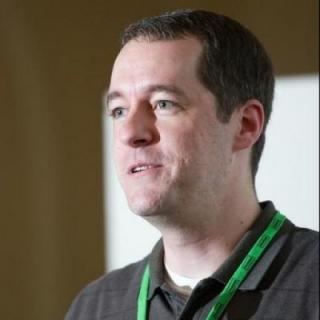Conference: Jun 26-28, 2017
Workshops: Jun 29-30, 2017
Presentation: Membership, Dissemination and Population Protocols
Location:
- Salon E
Duration
Day of week:
- Tuesday
Level:
- Advanced
Persona:
- Developer
Key Takeaways
- Hear practical applications of academic research with a large scale distributed system.
- Discuss membership and dissemination protocols and understand their application in practice.
- Learn practical lessons applying membership and dissemination protocols to a large scale distributed system.
Abstract
We are building an instrumentation platform that runs across dozens of datacenters to provide operational visibility for internal systems and applications. This platform must remain up as much as possible and allow support and operations staff to understand and diagnose problems quickly. They must be able to ask questions like "what machines and applications are publishing metrics?", "what systems appear to be offline?", "what order did these errors occur in?", all without consulting every datacenter. Furthermore, they must be able to change configuration quickly, with confidence that every affected system will receive and act upon it.
To help with these problems, we are implementing several recently developed protocols for cluster membership, epidemic broadcast, and monotonic time. Respectively, these protocols allow us to know what nodes are peers, to disseminate configuration and status information, and to agree on roughly relative orders of events. Best of all, they are all synchronization-free, meaning we can achieve our goals while remaining highly available. In this talk, we'll discuss the protocols we chose, challenges to implementing them, and some preliminary results from deploying the protocols across our infrastructure.
Interview
Similar Talks

Tracks
Monday, 13 June
-
Architectures You've Always Wondered About
Case studies from: Google, Linkedin, Alibaba, Twitter, and more...
-
Stream Processing @ Scale
Technologies and techniques to handle ever increasing data streams
-
Culture As Differentiator
Stories of companies and team for whom engineering culture is a differentiator - in delivering faster, in attracting better talent, and in making their businesses more successful.
-
Practical DevOps for Cloud Architectures
Real-world lessons and practices that enable the devops nirvana of operating what you build
-
Incredible Power of an Open-Sourced .NET
.NET is more than you may think. From Rx to C# 7 designed in the open, learn more about the power of open source .NET
-
Sponsored Solutions Track 1
Tuesday, 14 June
-
Better than Resilient: Antifragile
Failure is a constant in production systems, learn how to wield it to your advantage to build more robust systems.
-
Innovations in Java and the Java Ecosystem
Cutting Edge Java Innovations for the Real World
-
Modern CS in the Real World
Real-world Industry adoption of modern CS ideas
-
Containers: From Dev to Prod
Beyond the buzz and into the how and why of running containers in production
-
Security War Stories
Expert-level security track led by well known and respected leaders in the field
-
Sponsored Solutions Track 2
Wednesday, 15 June
-
Microservices and Monoliths
Practical lessons on services. Asks the question when and when to NOT go with Microservices?
-
Modern API Architecture - Tools, Methods, Tactics
API-based application development, and the tooling and techniques to support effectively working with APIs in the small or at scale. Using internal and external APIs
-
Commoditized Machine Learning
Barriers to entry for applied ML are lower than ever before, jumpstart your journey
-
Full Stack JavaScript
Browser, server, devices - JavaScript is everywhere
-
Optimizing Yourself
Keeping life in balance is always a challenge. Learning lifehacks
-
Sponsored Solutions Track 3









